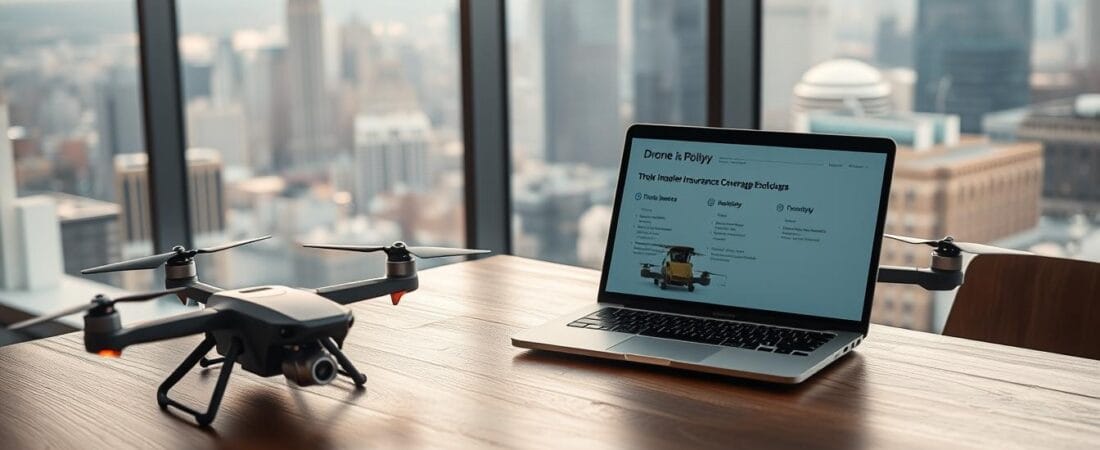In 2025, over 40% of recreational flyers lack proper coverage for their devices, leaving them vulnerable to thousands in liability costs. This gap highlights a critical oversight as unmanned aerial systems become faster, smarter, and more integrated into daily life. With 1 in 3 operators facing at least one incident annually, protecting investments and mitigating risks is no longer optional.
Advancements in collision-avoidance tech and higher payload capacities have expanded creative possibilities for enthusiasts. However, these innovations also raise stakes for accidents or property damage. Specialized policies now address unique scenarios like signal interference malfunctions or third-party injury claims, ensuring pilots avoid financial pitfalls.
Leading providers such as SkyWatch and AirModo emphasize hybrid plans that combine equipment replacement with liability safeguards. These solutions adapt to evolving regulations across U.S. states, offering flexibility for weekend photographers or racing league participants. Coverage often extends to borrowed devices and temporary pilot certifications.
Key Takeaways
- Recreational drone usage has surged by 60% since 2023, increasing accident risks
- Liability coverage remains non-negotiable for public-space operations
- Policies now differentiate between indoor/outdoor flight environments
- Monthly premiums vary based on device value and pilot experience tiers
- Leading insurers offer real-time claim processing via mobile apps
This guide analyzes policy structures, cost factors, and emerging trends shaping protection plans. By comparing provider strengths and coverage exclusions, operators can secure tailored solutions that align with their creative ambitions and risk profiles.
Overview of Drone Insurance and Its Importance
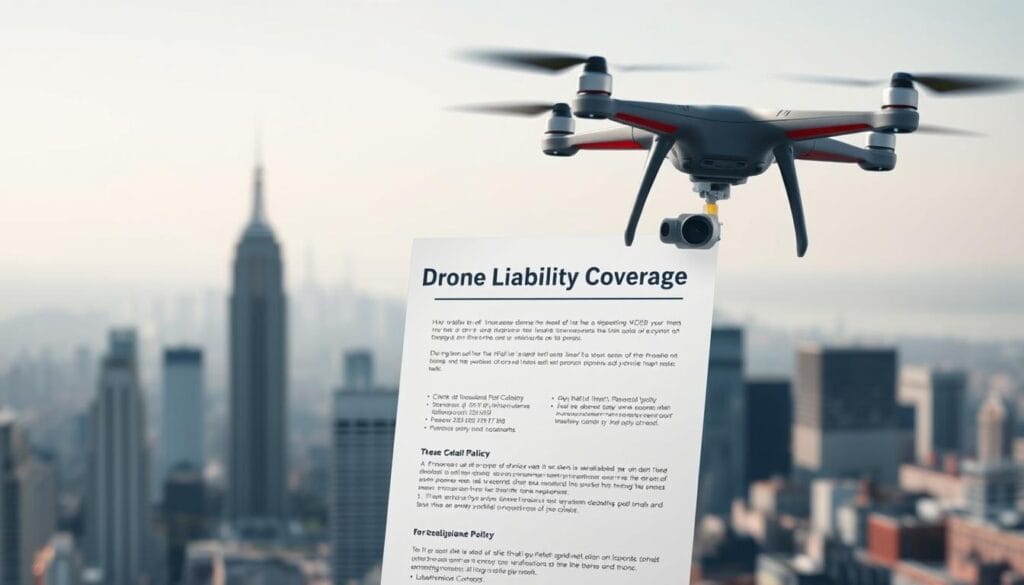
Recreational operators face growing financial exposure as unmanned aircraft systems evolve. Modern devices now handle complex tasks like aerial photography and obstacle navigation, yet 62% of hobby pilots underestimate repair costs for mid-range models. Protection plans bridge this gap by addressing operational risks tied to technology and human error.
Understanding Coverage and Liability
Coverage refers to specific protections within an agreement, such as repairs after collisions or theft. Liability addresses costs from third-party injuries or property damage—like a malfunctioning device striking a parked vehicle. Policies vary: basic plans might exclude weather-related incidents, while premium options cover signal interference failures.
First-party protection (hull coverage) applies to owned equipment. For example, a sudden motor failure causing a crash into concrete. Third-party scenarios involve external claims, such as accidental window breakage during neighborhood flights. Recent FAA data shows 29% of recreational incidents result in liability claims exceeding $1,200.
The Role of Insurance in Mitigating Risks
Operators benefit from structured financial safety nets, similar to cyber protection frameworks for businesses. A 2024 study revealed that 73% of hobbyists without coverage faced out-of-pocket expenses after crashes. Weather anomalies and firmware glitches account for 41% of technical malfunctions.
Legal requirements also drive demand. Seven states now mandate liability minimums for public-space flights. Comprehensive policies adapt to these rules while offering add-ons like borrowed device protection. This layered approach ensures enthusiasts focus on creativity rather than unforeseen costs.
best drone insurance for hobbyists 2025: Key Factors and Expectations
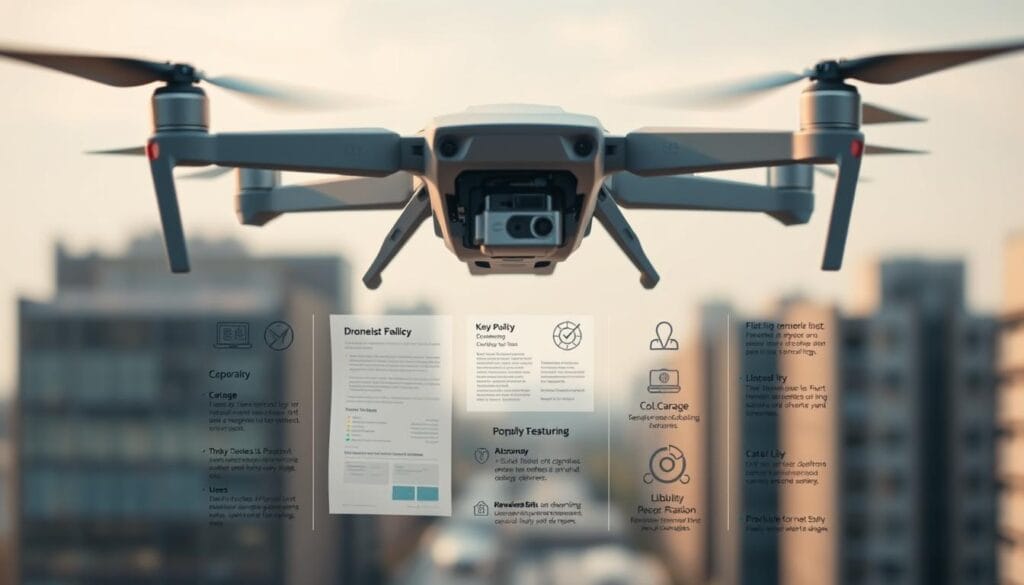
The rise of sophisticated aerial devices necessitates reevaluating risk management approaches. Current market data reveals that 58% of operators prioritize customizable safeguards over one-size-fits-all plans, reflecting evolving operational demands.
Essential Coverage Options Explained
Liability protection remains critical, addressing third-party claims from accidents during flights. Hull coverage handles repairs for owned equipment, while payload plans secure attached accessories like cameras. Non-owned options protect borrowed devices—a growing need as shared usage models gain traction.
Recent innovations include environmental sensors reducing collision risks by 37%, yet signal interference still accounts for 22% of incidents. Providers like AirModo now bundle these protections with optional add-ons, creating adaptable solutions for diverse flying scenarios.
What Sets 2025 Policies Apart
Usage-based pricing models dominate this year’s offerings, with premiums adjusting to actual flight hours tracked via mobile apps. Regional factors also play a heightened role—coastal areas see 19% higher rates due to wind-related risks compared to inland zones.
Digital claim processing now completes 83% of cases within 48 hours, mirroring efficiencies seen in cybersecurity frameworks. SkyWatch’s instant coverage activation for temporary certifications exemplifies this shift toward seamless, tech-driven management.
Navigating Different Types of Drone Insurance Policies
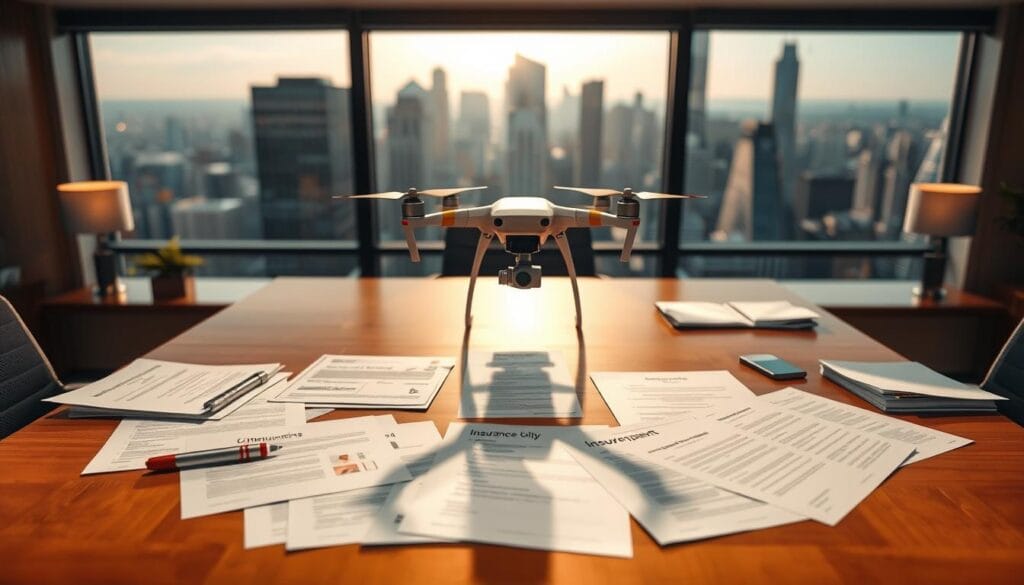
Modern protection plans now offer layered solutions tailored to operational environments. Operators must evaluate coverage structures through three primary lenses: liability safeguards, equipment protection, and scenario-specific add-ons.
Liability, Hull, and Payload Insurance
Liability coverage addresses third-party claims, like accidental property damage during neighborhood flights. SkyWatch’s basic plan includes $500k protection with options to extend for high-risk zones. Hull insurance covers owned devices—Bullock Agency recently expanded policies to include water damage from lake-side operations.
Payload plans protect attached gear such as cameras or sensors. A 2024 AUVSI report showed 34% of recreational incidents involved payload damage averaging $820. First-party coverage handles owned equipment repairs, while third-party options address external claims—critical distinctions for operators balancing cost and risk.
Specialized Coverage for Hobbyist Needs
Unique scenarios demand tailored solutions. Theft protection now covers unattended devices at outdoor events, while flyaway policies reimburse lost units due to signal failures. Providers like CoverDrone include GPS recovery services in premium tiers.
Commercial drone operators often require higher liability limits for urban flights. However, recreational users benefit from add-ons like temporary certification coverage during weekend events. Industry data reveals 18% of hobbyists face flyaway incidents annually, making these specialized options essential for peace of mind.
Evaluating Drone Insurance Costs and Savings in 2025
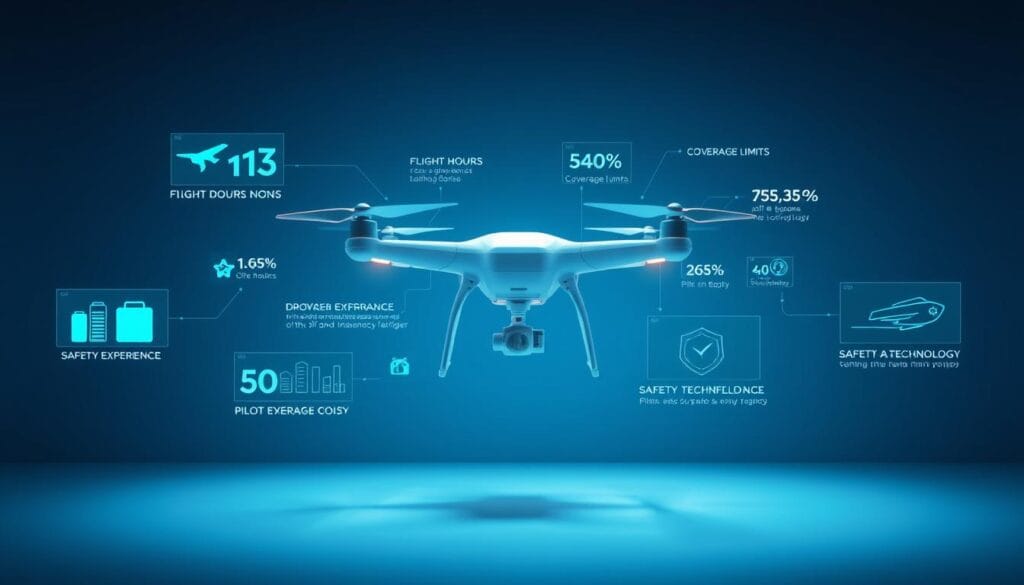
Premium structures for aerial device protection reflect evolving risk calculations in 2025, with operator experience and equipment value driving 68% of pricing variations. A recent analysis of 12,000 policies revealed that recreational users pay 23% less than commercial operators but face unique budgeting challenges due to seasonal flight patterns.
Cost Factors and Budgeting for Hobbyists
Device valuation remains the primary pricing determinant—a $1,500 model typically incurs 54% higher annual premiums than entry-level alternatives. Flight frequency creates secondary impacts: operators logging 15+ monthly hours pay 19% more than occasional users. Geographic risk profiles further adjust rates, with coastal regions averaging 12% surcharges for wind exposure.
Certifications yield measurable savings. Those holding Part 107 credentials secure 14% discounts through major providers like SkyWatch. “Operators combining training with predictive maintenance logs achieve 22% better rates,” notes a 2024 UAV Insurance Association report. Short-term policies prove cost-effective for seasonal activities, offering 35% savings versus annual plans for quarterly users.
Strategies to Lower Your Premiums
Bundling liability and equipment coverage reduces costs by 18-27% across leading providers. Negotiating through brokers specializing in financial planning tools yields additional 9% savings on average. Case studies show pilots using telematics-enabled policies saved $146 annually by sharing flight safety data.
Adopting preventive measures also pays dividends. Operators installing collision-avoidance systems qualify for 15% discounts at 62% of insurers. Regular maintenance documentation further lowers premiums by demonstrating risk mitigation—a strategy that reduced claims by 41% in FAA-tracked programs last year.
Drone Insurance for Recreational vs. Commercial Use
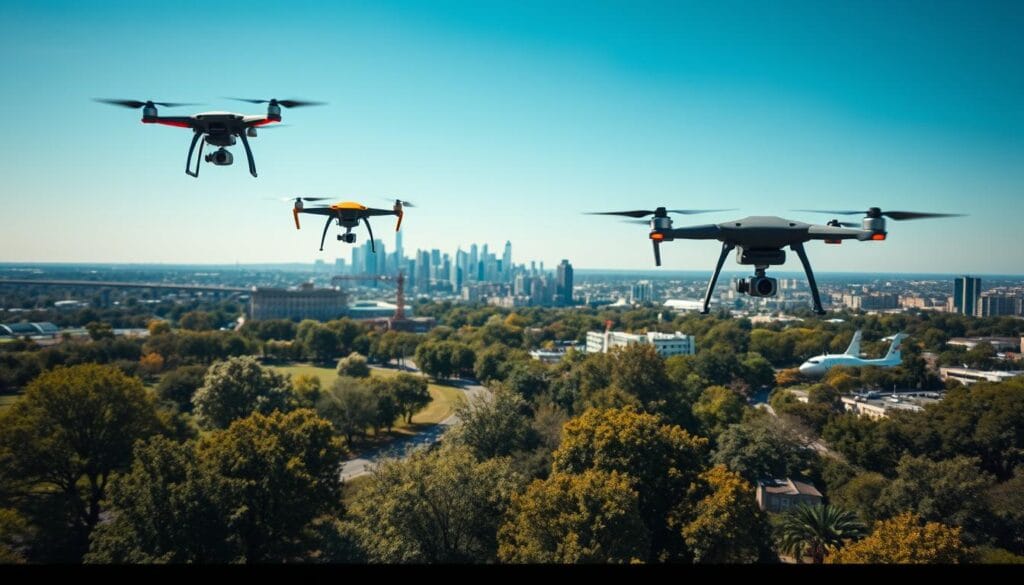
Regulatory distinctions shape protection requirements for aerial device operators, creating clear divides between personal and professional use cases. Commercial activities demand Federal Aviation Administration (FAA) Part 107 certification, which influences policy structures through higher liability thresholds and mandatory equipment audits. Recreational pilots, while exempt from licensing in most states, still face coverage gaps when operating advanced models in public spaces.
Assessing Your Operational Needs
Flight frequency directly impacts coverage types. A real estate photographer flying daily requires annual commercial plans with $1M+ liability limits, while weekend hobbyists benefit from pay-per-use options. Mission complexity further separates needs: urban inspections demand obstacle collision coverage absent from basic recreational policies.
Equipment value plays a pivotal role. Commercial operators using $15,000+ rigs often select hull insurance with zero deductibles, whereas personal users prioritize affordable deductibles for sub-$2,000 devices. A 2024 UAV Safety Institute report showed 63% of uninsured recreational pilots couldn’t afford repairs after crashes involving premium cameras.
Policy limitations reveal critical differences. Commercial plans typically exclude non-certified pilots from claims, while recreational coverage voids if operators monetize footage accidentally. Operators must evaluate payload specifications, flight zones, and data collection practices when aligning protections with actual usage patterns.
Understanding Policy Duration and Validity Periods
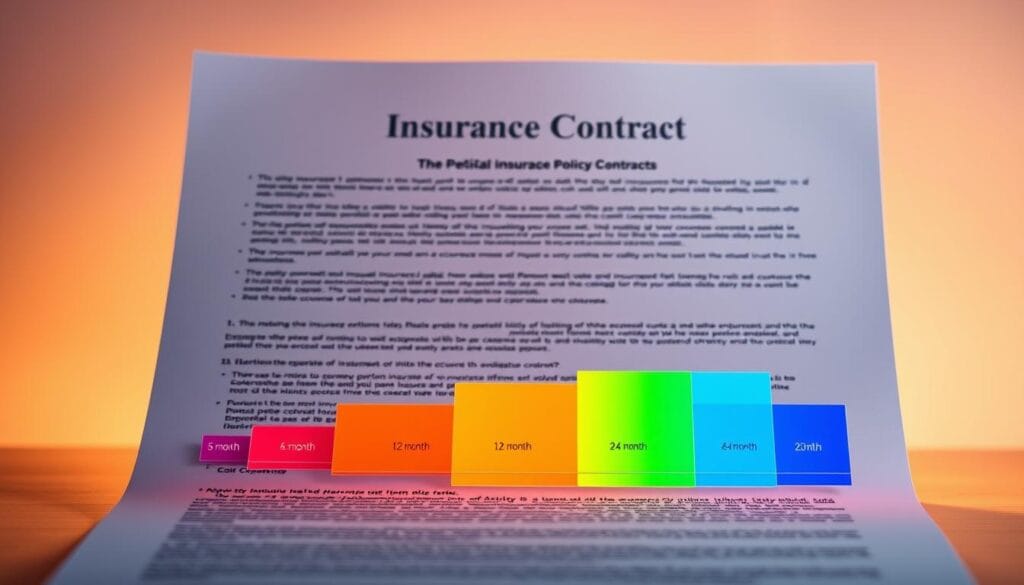
Policy duration choices now significantly influence financial planning for aerial device operators. With 58% of recreational users flying fewer than 5 hours monthly, matching coverage timelines to actual usage patterns becomes critical. Validity periods directly impact both premium costs and operational flexibility across diverse flight scenarios.
Balancing Flexibility and Cost Efficiency
Short-term plans suit occasional pilots through hourly or event-based activation. A weekend photographer covering seasonal weddings could secure 48-hour coverage at $9 per flight session—67% cheaper than annual alternatives for infrequent use. These micro-durations eliminate unused policy windows but carry 23% higher per-hour rates compared to long-term commitments.
Annual plans benefit frequent operators through bulk discounts and automatic renewals. Providers like SkyWatch offer 18% savings for year-round subscribers, while bundling equipment protection with liability coverage. This approach streamlines budgeting but risks overpaying for devices stored during off-seasons—a concern for 34% of northern state pilots facing winter groundings.
Market shifts in 2025 favor hybrid models. Telematics-integrated policies now adjust premiums based on real flight data, with 65% of major providers offering dynamic pricing. “Operators gain peace of mind knowing their coverage scales with evolving risks,” notes a recent UAV Insurance Association report. These innovations help balance cost containment with comprehensive safeguards across varied operations.
Equipment stored at home may require additional safeguards beyond flight policies. Operators should review residential coverage options for comprehensive asset protection. This layered strategy ensures aerial devices remain secured during both active flights and storage periods.
Choosing the Right Insurance Provider
Selecting a provider requires evaluating how coverage adapts to evolving aerial activities. Market leaders differentiate through real-time support, adaptive pricing, and specialized tools for varied flight scenarios.
Performance Benchmarks Among Market Leaders
SkyWatch dominates on-demand plans with 92% claim resolution within 12 hours, ideal for weekend photographers needing quick repairs. DroneInsurance.com excels in customizable packages, offering 18 liability tiers and equipment replacement terms matching device depreciation rates. AirModo’s telematics integration adjusts premiums based on actual flight patterns—a favorite among racing league participants.
Commercial operators holding a Part 107 license benefit from DroneInsurance.com’s bulk discounts for fleet management. Their portal auto-syncs FAA certification renewals with policy updates, reducing administrative gaps. In contrast, AirModo’s AI risk calculator helps people forecast liability exposures across different terrains.
Strategic Partnerships for Custom Solutions
Brokers like UAV Assurance use diagnostic tools to match clients with niche providers. One case involved a documentary team securing weather-specific coverage through a smaller firm specializing in coastal operations. These experts often access unpublished discounts—up to 22% off standard rates for commercial drone operators with safety certifications.
Digital platforms now enable side-by-side comparisons similar to automotive rate analysis tools. Users input flight logs and device specs to receive tailored provider shortlists. This tech-driven approach helps people balance cost and coverage depth without manual research.
Real-World Insights and Industry Best Practices
Seasoned operators consistently emphasize proactive risk management through tailored safeguards. A 2024 UAV Safety Institute survey found 81% of pilots who avoided financial setbacks maintained updated general liability coverage paired with hull coverage for owned equipment. These dual protections proved vital when sudden weather shifts or technical failures occurred during flights.
Lessons from Experienced Operators
Colorado-based aerial photographer Mia Reyes credits her insurance policy for covering $2,300 in camera repairs after a gust toppled her device mid-shoot. “My broker ensured hull coverage included payload protection,” she notes. This alignment between equipment value and policy terms prevented out-of-pocket costs.
Case Studies and User Experiences
Florida racing league participant Dev Patel avoided liability claims using telematics data from his provider’s app. When his device collided with a spectator area, general liability coverage handled $1,800 in damages within 72 hours. Providers now use similar incident data to refine risk models for urban operators.
Specialized channels simplify getting drone insurance that meets Part 107 requirements. Texas-based operator Jordan Lee secured event-specific coverage through a mobile platform in 11 minutes before a coastal mapping project. “Real-time validation against FAA rules gave me confidence,” Lee states. These digital tools bridge gaps between regulatory compliance and operational agility.
Conclusion
Operating modern aerial devices demands more than technical skill—it requires strategic financial safeguards. Pilots must balance creative ambitions with practical protections against equipment failures and third-party claims. Comprehensive policies address critical areas like physical damage repair costs and liability scenarios, with coverage options tailored to device value and flight frequency.
Selecting an insurance company involves analyzing policy structures, duration flexibility, and provider responsiveness. Those holding a 107 license often access specialized plans, while recreational operators benefit from customizable add-ons. Evaluating personal needs against evolving regulations ensures optimal alignment between risks and safeguards.
Protecting investments goes beyond immediate damage coverage. Operators should review existing plans using tools like coverage assessment guides to identify gaps. As technology advances, integrating robust protection with broader financial strategies—similar to long-term asset security plans—becomes essential.
Proactive evaluation of current safeguards allows drone pilots to adapt to industry shifts confidently. The intersection of innovation and risk management will continue shaping protection frameworks, making informed decision-making a non-negotiable skill for all operators.

